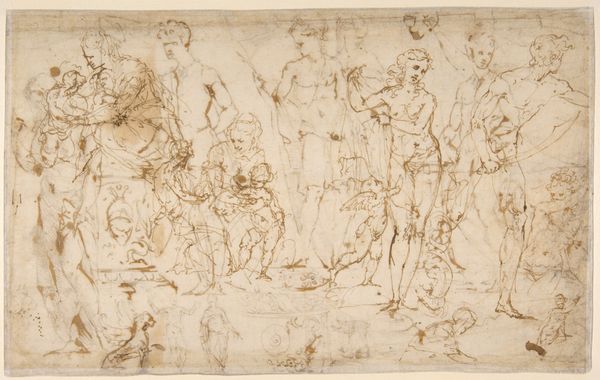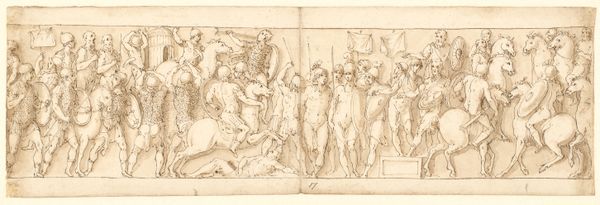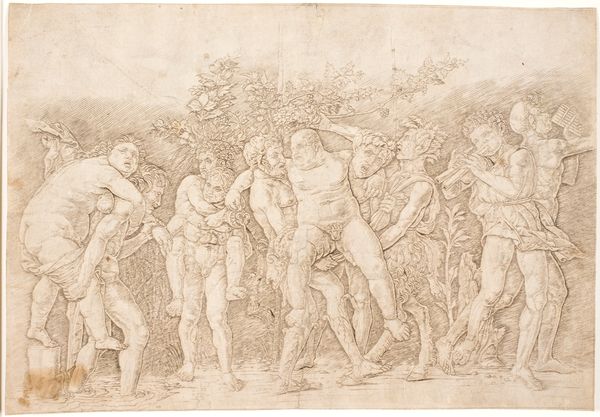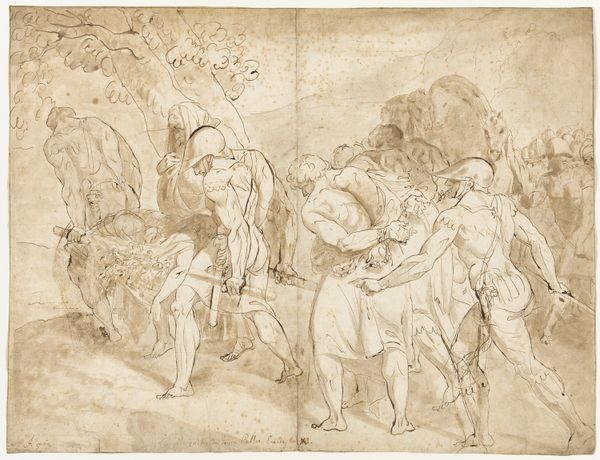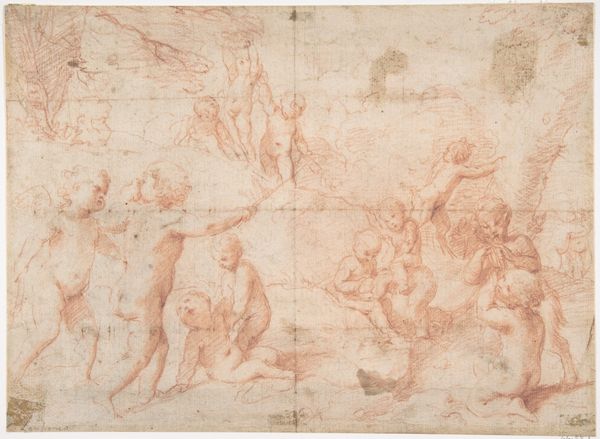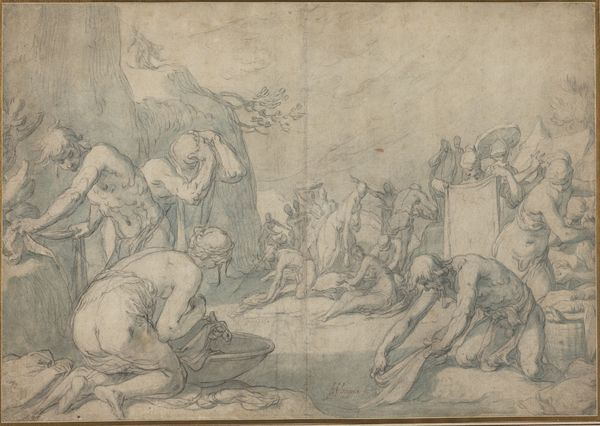
Barbarian fugitives and their animals are brought out of their hiding-place (CXVI); at upper left the end of a cartouche with a scroll (Guerra’s own addition) 1544 - 1618
0:00
0:00
drawing, paper, ink
#
drawing
#
narrative-art
#
figuration
#
paper
#
ink
#
history-painting
#
italian-renaissance
Dimensions: 133 mm (height) x 432 mm (width) (bladmaal)
Curator: Giovanni Guerra's "Barbarian Fugitives and Their Animals Are Brought Out of Their Hiding Place" dates from sometime between 1544 and 1618. This ink drawing on paper offers a slice of, well, perceived history. Editor: It's a crowded composition! Like figures tumbling out of a well, interspersed with frightened livestock. There's a real sense of displacement and uprooting. The line work, though detailed, also feels quite frantic. Curator: Absolutely. Guerra, entrenched in the late Italian Renaissance, really dives into historical narrative here. The work seems intended to document or, perhaps more accurately, interpret a moment of conquest. Consider the power dynamics— the 'barbarians,' dispossessed and herded by figures seemingly of greater stature and authority. Editor: The “barbarian” label does a lot of work here, doesn't it? I wonder how that would have resonated then and now. You know, there's an odd charm, almost cartoonish, to the terrified expressions on the animal's faces juxtaposed with the serious intensity on the human figures. The linear detail adds a classical veneer to some truly visceral emotions. Curator: Well put! And Guerra clearly references classical reliefs, but as he makes his own additions to the scroll within the cartouche, his personal interventions signal that he is offering a reinterpretation as much as a record. It makes me wonder, of course, about his motivations and the assumptions shaping this perspective. To whose benefit is this narrative being constructed, and how does the art play in it? Editor: Good questions. And speaking about his technique, do you think it softens or intensifies the harshness of this scene? Curator: Interesting! His medium gives it that delicate fragility but renders the image more enduring. The very act of drawing seems to suggest the meticulous documentation of power. Editor: Right. It's interesting to consider this as an artistic exercise exploring how visual stories uphold power dynamics. And seeing the raw emotion on the barbarian’s faces, they look just as real now, so long after the conquest they portray. Curator: I agree! The work makes the historical strangely… relevant. It encourages reflection on conquest and marginalization even today.
Comments
No comments
Be the first to comment and join the conversation on the ultimate creative platform.




